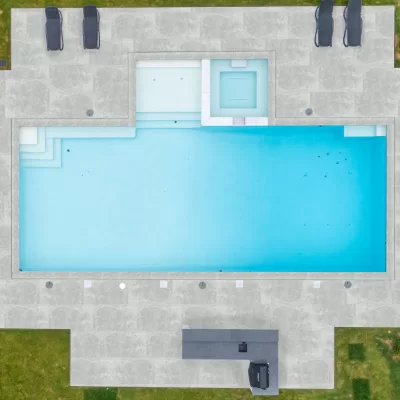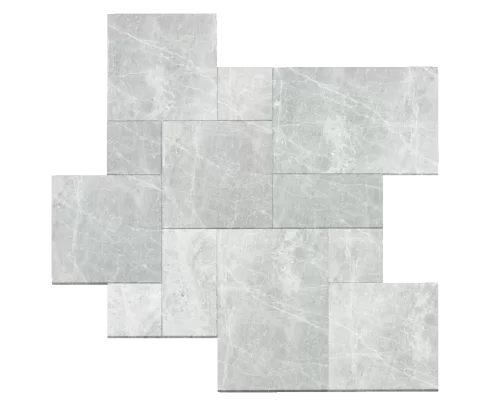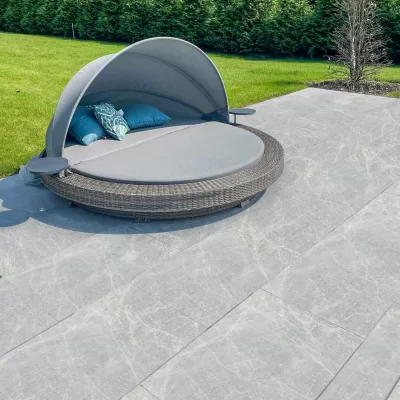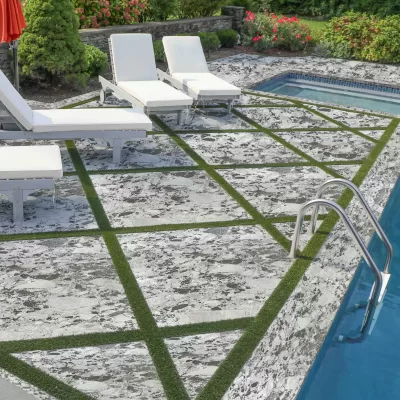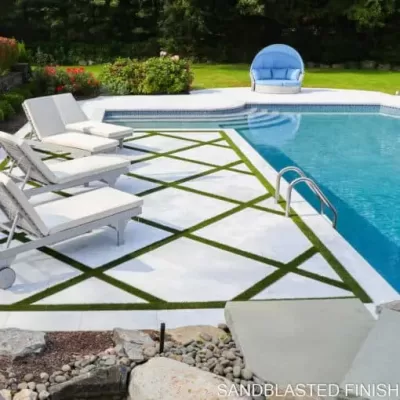Installing marble pavers can dramatically enhance the exterior beauty of your home.
Whether you’re laying a stunning pathway, creating a sophisticated pool deck, or giving your driveway a touch of elegance, the process of installation can seem a little daunting.
With the right preparation, materials, and understanding of the different substrates—like sand, mortar, and concrete—you can achieve a flawless, long-lasting result.
From timeless travertine to stylish Calacatta Gray marble tiles, every stone has its unique charm and benefits.
Keep reading as I guide you through every step of the process, demystifying the art of marble paver installation.
Key Takeaways
- Marble Pavers Add Aesthetic Appeal and Durability to Outdoor Living Spaces Such as Pool Decks and Driveways.
- The Installation Process of Marble Pavers Involves Choosing the Right Kind of Marble Stone, Organizing Delivery, and Understanding the Specific Method for Installation Based on the Substrate.
- Marble Pavers Are Durable and Resistant to Salt Water, Making Them Ideal for Use Around Swimming Pools.
- The Installation Process of Marble Pavers Varies Depending on the Substrate, Including Sand Base, Mortar Bed, or Concrete Base.
- Proper Care and Maintenance, Such as Regular Cleaning and Sealing, Are Essential for Preserving the Beauty and Longevity of Marble Pavers.
Introduction
There is nothing quite like the classic elegance of marble pavers. When it comes to transforming ordinary living spaces, marble stone brings a touch of refined taste. Be it for your pool deck, driveway, or walkway, marble pavers add not only aesthetic appeal but also durability to your hardscape.
The installation process of marble pavers is a bit more nuanced than using a standard brick paver or porcelain paver. From customer service support on choosing the right marble tiles like Carrara or Travertine to receiving side delivery of your order, the journey starts even before arriving at the job site. But don’t fret as I will guide you on this exciting pathway:
- Deciding on the right kind of marble stone.
- Taking care of the order sample, SKU, and other points with a trusted company like NT Trading.
- Organizing a time and place for side delivery, ensuring a smooth arrival of the building material at your job site.
- Understanding the specifics of the methods based on the substrate, may it be sand base or cement look.
Before starting the installation, some preparation is needed. Choosing the right sealer to protect your marble pavers from the elements and pool size, if you’re installing pool coping, are part of this crucial pre-installation process. It’s also important to note that any veining in the stone is natural and part of the design ideas that make each marble paver unique.
While this guide will focus primarily on marble pavers, the recommendations apply also to other materials such as travertine pavers, porcelain tile, limestone pavers, and porcelain slabs. Whether you’re in Northern New Jersey or South Florida, you can count on this guide to help add a touch of natural stone beauty to your dream house. So let’s get started!
The Timeless Beauty of Marble Pavers
I can’t begin to describe the timeless beauty embedded in each marble paver. From the unique veining to the spectrum of colors it offers, marble stone is a favorite for both indoor and outdoor projects. It seamlessly fits into contemporary, rustic, or traditional design ideas, expanding the possibilities for transforming your living spaces.
One of the noteworthy advantages of marble pavers is their durability. These natural beauties can withstand varied weather conditions, be it ocean blue skies or a regular day in Hawthorne. The surface plaster-hard exterior is well-complemented by pleasing aesthetics, making it an all-around choice for hardscapes such as driveways, pool decks and even stepping stones.
Another remarkable characteristic of marble pavers is their resistance against a saltwater generator (SWG), which is often used in swimming pools. The pool math gets easier when you opt for marble stone for pool coping or as pool tiles for the waterline. You’ll find it’s worth every penny for a long-lasting, sky-blue swimming pool that blends harmoniously with your dream house.
Finally, the Pleasanton touch of marble pavers extends beyond mere aesthetics. With proper installation and maintenance, they provide a safer, non-slippery surface for wet areas like pool decks and shower corner shelves the pool tile. Whether opting for a 24×24 or x48 size, marble pavers, and marble thickness specialty can help elevate the safety and function of your spaces, giving true meaning to the phrase ‘functional elegance’.
Different Installation Methods for Marble Pavers
Marble paver installation depends heavily on the substrate you’re working with. The broad categories we will look at here include sand, mortar, and concrete. Each requires a unique set of tools, techniques, and a detailed understanding of the installation process.
When installing over a sand base, we lay an edge restraint for the pavers first. After leveling out the sand, we then place the pavers on top, taking care to ensure a uniform distance between each paver with a spacer for perfect alignment. Applications where the sand base is a good option typically include patios, walkways, and driveways.
Moving on to a mortar bed, this is generally used in interior installations like hallways or bathrooms, and for exterior vertical installations like wall tile or cladding. Before laying on the mortar, I use pedestals or paver pedestals to ensure leveling. A mixture of thin-set mortar is used, typically resulting in a stronger bond between the paver and the substrate.
Lastly, for a concrete installation, we would usually use a cement look. After the concrete slab is ready, we lay the marble pavers directly on the concrete, with the help of a thin-set adhesive specifically for marble pavers. This is common for outdoor installations where a solid, durable base is preferred.
Installing Marble Pavers on Sand Substrate
When installing marble pavers over a sand base, the first step is preparing the base itself. It’s essential to start with a compact layer of crushed stone. Once this layer is set, I spread a layer of sand on top, aiming for an even surface.
To ensure that the pavers sit perfectly level, the next step in the process involves setting an edge restraint. This restraint’s function is to hold the shape of the pavers. For an extra touch of attention, I frequently use an automatic level to keep everything as balanced as possible.
We then move on to laying the pavers. This step can be compared to piecing together a jigsaw puzzle. Each marble paver is carefully placed on the sand and aligned using a spacer for that perfect distance from its neighbor. Remember, a proper layout is important to prevent uneven spacing.
Once all the pavers are in place, I spread another layer of sand over the top and sweep it into the joints. This helps lock the pavers in place and provides a more finished look. Finally, a gentle mist of water helps to settle the sand, completing the sand installation process of your marble pavers.
Placing and Aligning the Marble Pavers on the Sand
Placing marble pavers on sand can be both an art and a science. As a professional, I always ensure that each paver is placed with precision. This entails not just dropping them on the sand base but carefully setting each one down.
Alignment of the marble pavers is the next crucial step. This is where your spacer becomes your best friend. Each paver should be evenly spaced from the others, ensuring a uniform look and preventing future shifting. Remember, a fraction of an inch off in the beginning can result in a significant error by the end.
There’s a unique satisfaction in seeing the marble pavers come together. Each piece aligns to form a beautiful pattern of natural stone elegance. Some prefer to work from the center outward while others prefer starting from a corner. It’s all about what works best for the design and dimensions of your space.
I cannot emphasize enough the importance of patience and care during this process. You might feel the urge to rush, but remember: your marble pavers aren’t just building materials. They’re stepping stones to transforming your living space. Take your time, adjust as needed, and rejoice in the beauty that comes to life with each paver you place.
Installing Marble Pavers on Mortar Substrate
Installing marble pavers on a mortar substrate is different from a sand base. While in principle it follows the same concept of preparing the base, leveling, and aligning the pavers, working with mortar adds another layer of complexity. Yet the end result is often a stronger bond between the paver and the substrate.
Preparation begins with setting a concrete slab. Once the slab is ready, I apply a layer of mortar mix. The consistency and thickness of the mortar play a big role in the success of this stage. It should have the right consistency and be evenly spread on the concrete slab, meeting the required standards.
The next step involves using paver pedestals. These pedestals help to ensure that each marble paver is placed level on the mortar. The following table details the main steps involved in this installation method:
| Steps | Description |
|---|---|
| Prepare the Concrete Slab | Remove any debris and clean the surface thoroughly. |
| Apply the Mortar Mix | Spread evenly, ensuring the right consistency and thickness. |
| Set Paver Pedestals | Place these for leveling before setting the marble pavers. |
| Position the Pavers | Align each paver at an equal distance using spacers. |
| Finish | Wipe excess mortar and ensure all pavers are securely set. |
After all the marble pavers are successfully set and aligned, the final step is to remove any excess mortar from the surface. Once the mortar has completely dried, you’re left with a beautiful and sturdy installation. This method gives more longevity and durability, especially for indoor installations where strength is just as important as aesthetics.
Setting the marble pavers into the mortar bed
Setting the marble pavers into the mortar bed begins once the mortar mix is ready and the paver pedestals are set in place. This phase requires precision to ensure the correct alignment and level of each paver. Remember, a job well done at this step significantly impacts the final look and longevity of your project.
The marble pavers are placed one by one onto the mortar bed. Spacers are used to ensure that each paver is at an equal distance from the next. Paying attention to lines and patterns is crucial here, much like painting a beautiful picture, one stroke at a time.
As each paver is set in place, I apply gentle pressure to make sure it sets well into the mortar. This doesn’t just require physical strength but a careful hand. Keeping a keen eye on the alignment and level is key to a successful installation. Here are the main steps involved:
- Apply the mortar mix evenly over the prepared area.
- Set paver pedestals to help ensure a level base.
- Place the marble pavers carefully onto the mortar, one at a time.
- Use spacers to keep an equal distance between each paver.
- Apply gentle pressure on each paver to ensure it sets properly into the mortar.
The setting process continues until all the marble pavers have been placed and aligned. Finally, a preliminary cleaning of the surface ensures no excess mortar remains on the pavers. A little patience, precision, and care will result in a beautifully installed marble paver surface that not only enhances visual appeal but also adds value to your property.
Installing Marble Pavers on Concrete Substrate
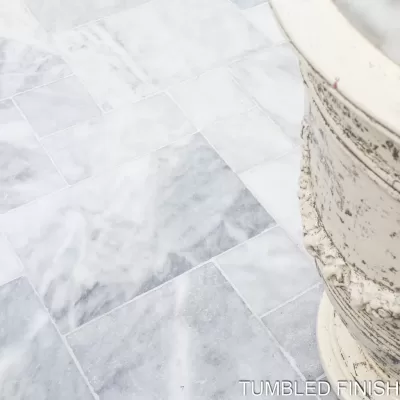
If you’re considering installing marble pavers on a concrete substrate, I have some noteworthy insights to share. This requires a different approach as compared to sand or mortar substrates. The primary difference lies in the use of a concrete base instead of sand or mortar.
We start by preparing the concrete slab, ensuring that it is clean and even. The slab serves as a solid base on which the marble pavers will be set. It’s essential to prevent any line or level deviations that could negatively impact the end result.
Next, I use a thin-set type of adhesive, specially formulated for marble paver installation on concrete. The thin set is applied evenly over the concrete before setting the pavers. Pay close attention to the following steps for a successful installation:
- Prepare the concrete slab by cleaning and leveling.
- Apply the adhesive evenly over the concrete slab.
- Set each paver into the adhesive, using spacers to maintain equal distances between each one.
- Ensure the marble pavers are properly aligned and level across the entire surface.
Upon completing these steps, the hard task of waiting begins. The adhesive needs to dry thoroughly before any weight is applied to the pavers. It’s worth noting, however, that the outcome is definitely worth the wait. Whether it’s a driveway, pool deck, or patio, marble pavers on concrete offer a durable, appealing, and long-lasting solution.
Preparing the Existing Concrete Surface
Preparing the existing concrete surface is the very first step in the process of installing marble pavers on the concrete substrate. It’s the foundation of the project, impacting everything that follows. Therefore, the work must be done thoroughly and carefully.
The surface must be clean and free of debris. Leaving dirt or other particles on the surface before applying the adhesive could prevent it from correctly bonding with the marble pavers. It’s not just about sweeping – but using high-pressure water or a concrete cleaning solution to ensure a pristine surface.
Another critical aspect to check is the surface level. Any uneven areas on the concrete slab might translate into misaligned pavers. To avoid this, I use a long, straight edge to detect any dips or bumps and then correct them as necessary.
I like to stress that an excellently prepared surface sets the stage for a successful installation. The efforts in this stage pay off when you witness a smoothly installed set of marble pavers transforming your area, blending functionality and ornamental appeal in perfect harmony.
Adhering the Marble Pavers to the Concrete with Mortar or Adhesive
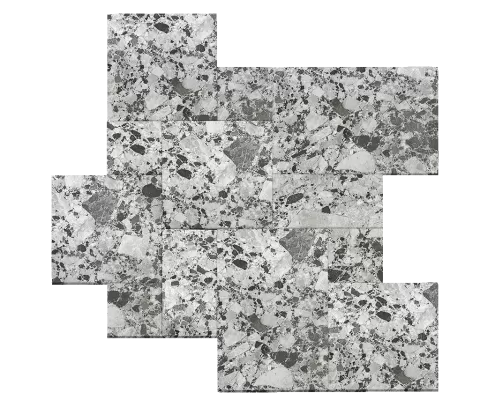
Adhering the marble pavers to the concrete is a vital step in the installation process. For this, I use an adhesive that works best with marble and concrete, known as thin-set adhesive. This specific adhesive forms a strong bond between the marble and the concrete slab, ensuring a durable installation.
The process starts by spreading a layer of thin-set adhesive evenly over the prepared concrete surface. A great tip to remember is to spread enough adhesive that can be covered with pavers within a 30-minute window. This prevents the adhesive from drying out before the paver is set in place.
Next, I place each marble paver onto the adhesive layer, using a spacer to maintain an even distance between each paver. It’s like piecing together a puzzle, but the satisfaction of seeing a symmetrical design come together is truly rewarding.
As each paver is set into the adhesive, I adjust as necessary to ensure they are leveled out. The technique involves applying gentle pressure to set the paver in place properly. Once all the pavers are aligned and adhered to, it’s time to sit back and watch the magic happen as the whole area transforms beautifully.
Tips for Maintaining and Preserving the Beauty of Marble Pavers
Marble pavers, once installed, don’t merely beautify your spaces but also increase the value of your property. However, preserving their beauty needs a certain amount of care and maintenance. While marble is durable, proper upkeep will ensure the long-lasting aesthetic appeal of your hardscape.
One of the critical steps in preserving the beauty of marble pavers is routine cleaning. Just like any other surface, dust and grime can accumulate over time. A gentle yet thorough cleansing using warm water and mild soap helps to maintain the shine. Avoid using harsh chemicals as these can tarnish the natural beauty of your stone.
Sealing the marble pavers is another essential step in maintenance. A quality sealer helps protect the marble from stains, etching, and weathering. Given that every stone has unique porosity, select a sealant that is best suited for marble. Regular sealing, usually every 3-5 years, can be very beneficial in prolonging the paver’s life span.
In the case of any chips or cracks, swift repairs can prevent further damage. If you’re not confident about doing this yourself, consider reaching out to a professional. Knowledgeable customer service teams are often just an email address or a phone call away. Properly caring for your marble pavers will ensure they remain a stunning feature of your property for years to come.
Final Thoughts on Installing Marble Pavers on Different Substrates
Installing marble pavers can significantly transform both your indoors and outdoors, making a stunning difference. Whether it’s on a driveway, a pool deck, a patio, or an interior hallway, the various types of substrates, including sand, mortar, and concrete, provide diverse options to suit your specific needs. The choice you make today will have a lasting impression on your property.
Each substrate requires a unique method for installation tailored to maximize its strengths and benefits. Whether it’s the flexibility and natural look of a sand base, the strong bond of a mortar substrate, or the durability of a concrete base, the right choice of substrate will help maximize the lifespan of your marble pavers.
As a professional, my goal is to help guide your decision-making process, ensuring you understand the installation process for each substrate. The journey is as important as the destination. The time and attentiveness you invest in the installation process directly reflect the final outcome.
Finally, remember that while marble pavers are a beautiful choice, they require proper care and maintenance to keep their elegant look intact over the years. But with the right care and consideration, your marble pavers can remain a captivating feature of your home, making a world of difference to your dream house.
The Most Asked Questions
Are marble pavers slippery when wet?
Marble pavers, like any other type of natural stone or concrete pavers, can become slippery when wet. The smooth surface of marble, in particular, may pose a risk of slipping and falling, especially in areas that are prone to moisture or water accumulation. However, there are ways to mitigate the slipperiness of marble pavers. One effective method is to choose marble pavers with a textured or non-slip surface. These types of pavers are specifically designed to provide better traction, even when wet. Additionally, regular maintenance and cleaning are crucial to ensure that the pavers remain safe and slip-resistant. It is recommended to use non-slip cleaning products and avoid using high-gloss sealers, which can enhance the slipperiness of the surface.
Finally, ensuring proper drainage and angling the pavers appropriately can help prevent water from pooling and reduce the risk of slipping. It is essential to consider these factors when choosing marble pavers for areas that are frequently exposed to moisture or water, such as pool decks, patios, or walkways.
Are marble pavers durable?
Marble pavers are known for their durability, making them a popular choice for outdoor spaces. These pavers are tough and robust, able to withstand heavy foot traffic, extreme weather conditions, and the test of time. The durability of marble pavers is mainly due to the strong composition of the marble itself. Marble is a dense and hard material that is resistant to chips, cracks, and scratches. It is also less likely to fade or lose its luster over time, providing a long-lasting solution for any outdoor application. Additionally, marble pavers are typically sealed to enhance their durability even further, making them more resistant to stains, moisture, and other potential damages.
However, it is important to note that the durability of marble pavers may vary depending on factors such as the quality of the stone and the installation method. Therefore, it is essential to source high-quality marble pavers and hire a professional installer to ensure the best results and maximize their durability. Overall, when properly installed and maintained, marble pavers prove to be a durable and reliable option for outdoor flooring.
How to clean marble pavers?
Preserving the beauty and lifespan of marble pavers requires regular cleaning. Start by clearing debris with a broom or leaf blower. Mix warm water with a marble-friendly, pH-neutral cleaner in a bucket. Steer clear of acidic or abrasive solutions that can harm marble. Using a soft brush or mop, scrub the pavers lightly, focusing on dirtier spots. After cleaning, rinse thoroughly to eliminate soap traces, either with a hose or a low-pressure washer. Dry the pavers with a towel or let them air-dry, and avoid walking on them until they’re dry. To shield against future stains, consider applying a marble sealant, following the product’s guidelines. Regular upkeep and sealing will keep marble pavers in top condition.
Where can I find white marble pavers?
If you’re in the market for white marble pavers, there are several places you can look to find the perfect ones for your project. One of the first places to start your search is at local stone suppliers or stone masons in your area. These professionals often have a wide selection of marble pavers and can offer expert advice on choosing the right ones for your needs. Additionally, home improvement stores and garden centers may carry white marble pavers in their outdoor or landscaping sections.
Another option is to explore online retailers and wholesalers that specialize in natural products. These websites typically have a vast array of marble pavers to choose from and can conveniently ship them directly to your doorstep. Furthermore, don’t forget to check out trade shows and expos dedicated to construction and landscaping, as these events often feature vendors that offer a variety of marble pavers, including white ones. Find the NT Pavers at 2023 Boutique Design New York Booth #3122 for the best white marble pavers between November 12-13 2023.
Where can marble rock be found?
One of the most iconic sources of marble is Italy, especially the Carrara region, which has been a marble hub for centuries. The Greek island of Paros is another historic source, with its pristine white marble being a staple in ancient art and architecture. Turkey, particularly the Afyon region, is a significant contributor to the global marble market, offering varieties like the “Afyon Ice Marble“ with its distinct appearance.
The United States, Spain, India, and China also have significant marble deposits, each with its unique characteristics. You can find them in Elegance when you search for marble pavers near me. We offer a diverse range of marble stone pavers, including unique varieties like “Pietra Grey“, “Blue Marble,” “Calacatta Grey,” “Candy Beige,” and “Rain Cloud Marble.” These pavers, available in finishes like sandblasted and tumbled, are perfect for outdoor applications, combining beauty with durability.
Marble, a symbol of luxury and elegance, is a natural beauty of stone that has been sought after for centuries. Its unique veining and diverse color palette make it a favorite for both classic and contemporary designs. While marble can be found in various parts of the world, certain regions are particularly renowned for their high-quality marble deposits.
Whether you’re looking for marble for flooring, countertops, or artistic endeavors, it’s essential to consider the source and quality. With proper care and maintenance, marble can remain a timeless feature in any space, embodying luxury and sophistication.
Can you pressure-wash marble pavers?
Yes, marble pavers can be pressure washed, but it’s crucial to use the right equipment and techniques. Opt for a pressure washer with a PSI rating below 2000 to prevent chipping or erosion. A wide-angle nozzle is recommended to distribute the pressure evenly, reducing the risk of concentrated damage.
Marble pavers, with their inherent elegance and beauty, are a popular choice for outdoor spaces. However, maintaining their pristine appearance requires careful cleaning, especially when they’re exposed to outdoor elements. While pressure washing is an effective method to rejuvenate the look of these pavers, it’s essential to approach the process with caution to avoid damaging the delicate stone.
Preparation Before Pressure Washing: Before you begin, clear any debris from the pavers. This includes leaves, twigs, and loose dirt. For stubborn stains or marks, pre-treat them with a mild detergent or a stone cleaner designed for marble. It’s essential to avoid harsh chemicals or acidic solutions, as they can discolor or etch the marble surface.
The Pressure Washing Process: Start by holding the nozzle a few feet away from the pavers, ensuring you maintain a consistent distance for even cleaning. Use sweeping motions and avoid focusing on one spot for too long. After pressure washing, inspect the pavers for any remaining stains and address them as needed. Once cleaned, let the pavers dry thoroughly.
Post-Cleaning Maintenance: To preserve the beauty of your marble pavers, consider applying a marble sealant. This will protect them from future stains and make subsequent cleanings easier. Regular sweeping and rinsing can also help maintain their appearance.
For a comprehensive guide on cleaning marble pavers, consider referring to Elegance’s Complete Guide on Cleaning Outdoor Marble Pavers. This guide offers in-depth insights into understanding marble’s unique properties, the materials and tools needed for cleaning, and step-by-step cleaning processes.
Do marble pavers stain?
Marble pavers, renowned for their timeless elegance and robustness, are a favored choice for many when it comes to outdoor spaces. However, a frequently asked question that arises is: Do marble pavers stain?
The straightforward answer is yes; marble pavers, like all natural stones, have the potential to stain. The inherent porosity of marble means it possesses minuscule openings that can absorb various liquids, leading to potential staining. Everyday substances, from oil spills, and red wine, to acidic elements like lemon juice, can become culprits if left unattended on marble surfaces.
Why Does Marble Stain? Marble’s natural composition makes it susceptible. Its porous nature means that any liquid left on its surface can seep in, leading to potential discoloration. This characteristic is why immediate attention to spills is crucial.
Preventing Stains on Marble Pavers: Protection is key. One of the most effective ways to guard against staining is by sealing the marble. A quality sealer acts as a shield, creating a barrier against potential staining agents. When choosing a sealer, ensure it’s specifically crafted for marble to get the best results. Adhering to the manufacturer’s guidelines during application will ensure optimal protection.
Routine maintenance is equally vital. Promptly addressing spills and using a gentle detergent or a cleaner designed for stone will aid in preserving the marble’s pristine appearance.
Addressing Stains on Marble: In the event of a stain, various removal techniques cater to different stain types. While some can be managed with home remedies, persistent or deep-set stains might require professional intervention. Consulting a stone care specialist can provide tailored solutions for challenging stains.
How to install marble pavers?
Marble pavers, synonymous with luxury and resilience, can elevate any outdoor space. If you’re contemplating installing these pavers, here’s a detailed guide to ensure a flawless finish:
- Planning: Measure the intended area and visualize the desired pattern. This step aids in estimating the required pavers and streamlining the installation.
- Site Preparation: Clear the area of debris or vegetation. Level the ground, ensuring proper drainage to avert water accumulation.
- Base Installation: Lay crushed stone or gravel as the foundation. Compact it for a firm, even base. The depth might vary based on the project, so professional consultation might be beneficial.
- Edge Restraints: Install restraints like concrete curbs around the perimeter to keep the pavers in place.
- Sand Bed: Spread an inch-thick sand layer, leveling it with a screed board.
- Installation: Begin placing the pavers from one corner, ensuring they snugly fit while adhering to the pattern. Adjust using a rubber mallet if necessary.
- Cutting: For edges or unique shapes, cut the pavers using a wet saw or diamond blade.
- Finishing: Sweep masonry sand across the pavers to fill gaps, stabilizing them.
- Sealing: Apply a sealant to protect against stains and amplify their natural hue. Regular sealing is recommended for sustained beauty.
By carefully planning, and preparing the site, and following these step-by-step instructions, you’ll be able to achieve a stunning and long-lasting installation. Remember to consult with professionals or a landscape contractor if you have specific questions or concerns during the process.
How to clean sandblasted marble pavers?
Sandblasted marble pavers, with their unique texture, require specific care. Here’s how to maintain their pristine look:
- Initial Cleaning: Sweep off loose dirt or debris.
- Soapy Solution: Mix a mild detergent with warm water. Using a soft-bristle brush, scrub the pavers gently in circular motions, focusing on stained areas.
- Rinsing: Thoroughly rinse with clean water, ensuring no soap remains.
- Stain Removal: For stubborn stains, baking soda and water poultice can be effective. Apply, cover with plastic wrap overnight, and scrub off the next day.
- Sealing: Consider sealing the pavers with a marble-specific sealer to prevent future stains.
By following these simple steps, you can effectively clean and maintain your sandblasted marble pavers, ensuring their lasting beauty for years to come.
Can you tell us about the Rain Cloud Marble Pavers offered by NT Pavers and their service areas?
NT Pavers, located in Northern New Jersey, is a leading manufacturer and distributor of marble, travertine, and porcelain for both interior and exterior areas. They are quarry owners and take pride in offering first-quality material, especially their Rain Cloud Marble Pavers. They collaborate with over 1000 architectural designers, stores, and mason yards to cater to every client’s needs. Their extensive range includes pavers, tiles, copings, veneers, ledgers, mosaics, and more.
NT Pavers is dedicated to providing exceptional customer service and has three warehouses where clients can view their vast collection. Their service areas include New Jersey, Connecticut, New York, Long Island, New Hampshire, Rhode Island, Michigan, North Carolina, South Carolina, Texas, Arizona, Virginia, Maryland, Pennsylvania, Florida, Georgia, California, Illinois, Ohio, and Nevada.
What are the differences between travertine tile and marble pavers?
Travertine tile is a type of limestone, while marble pavers are made from metamorphic rock. Both are popular choices for flooring, but marble pavers are often preferred for their unique veining and elegance.
Can I use floor tile adhesive for marble pavers?
While floor tile adhesive can be used for indoor applications, it’s recommended to use a specialized adhesive for marble pavers, especially when installing on sand, mortar, or concrete.
How do marble pavers compare to cobblestone?
Cobblestone is rougher and more rustic, while marble pavers offer a smoother and more refined appearance. Both can enhance the curb appeal of a property.
Is a marble driveway durable?
Yes, a marble driveway is not only aesthetically pleasing but also durable. However, it’s essential to ensure proper installation and maintenance to prevent skidding and prolong its lifespan.
Can I use a salt water generator with marble pavers around my pool?
Yes, a salt water generator can be used. However, ensure that the grout between the pavers is sealed to prevent salt damage.
What’s the ideal pool size for marble pavers?
Marble pavers are versatile and can be used for any pool size. Whether you have a small plunge pool or a large lap pool, marble pavers can enhance the pool area.
Are there risks of skidding with marble pavers around the pool?
Properly sealed and maintained marble pavers reduce the risk of skidding. It’s also advisable to choose pavers with a slightly textured surface for the pool deck material.
How do travertine driveways and marble pavers differ?
While both are natural stones, a travertine driveway has a more porous surface, whereas marble pavers are denser and less susceptible to staining.
What does “field blank” mean in paver installation?
“Field blank” refers to the main area of the installation, excluding borders or patterns. It’s essential to ensure uniformity in this area for a cohesive look.
How can marble pavers enhance curb appeal?
Marble pavers add a touch of luxury and sophistication, significantly boosting the curb appeal of any property.
Are paver driveways better than concrete?
Paver driveways, especially those made of marble, offer better aesthetics and flexibility in design compared to plain concrete.
How should I maintain my marble pavers in the pool area?
Regular cleaning and sealing will keep your pool area looking pristine. Avoid using harsh chemicals that might damage the grout or the pavers.
How does interior design influence the selection of paving materials like brick pavers and porcelain slabs?
Interior design plays a pivotal role in choosing materials. While brick pavers offer a rustic appeal, porcelain slabs provide a sleek, modern look suitable for contemporary spaces.
How is the surface area calculated for different paving solutions, and how does pattern pricing vary?
The surface area is determined by multiplying the length and width of the space. Pattern pricing can differ based on the complexity of the design, especially with materials like cobblestones and brick pavers.
Are cobblestones a recommended paving solution, and what are the specks seen on some pavements?
Cobblestones are durable and aesthetically pleasing, ideal for various applications. Specks on pavements are tiny spots or particles that add texture and visual interest.
Conclusion
At the end of this journey, you’re now equipped with valuable knowledge about installing marble pavers over different substrates. A well-executed installation of processes will not only realize your design ideas but will also significantly enhance your living space, whether in South Florida or New Jersey.
Marble, with its natural veining and a wide variety of colors, offers timeless elegance. It’s not just about having a pretty picture. Adequate preparation, a systematic approach, and meticulous execution make this picture-perfect. That’s my guiding philosophy in every project I undertake, and I’ve strived to share that wisdom throughout this guide.
Maintenance is a requisite chapter in the story of your marble pavers. Like any worthy story, it requires attention and regular care. Proper cleaning, periodic sealing, and swift repairs are some highlighted elements in this chapter.
The beauty of marble pavers, coupled with your creativity and my professional guidance will surely create an enriching space. The path to it may seem daunting, but the efforts invested are fulfilling. Once completed, each glance at your work will remind you of a well-executed job and the significant return it brings to your property.
Visit us at NT Pavers and let’s sculpt your dream project together. From consultation to installation and easy appointment scheduling watch your vision unfold with a partner who understands true elegance. Step into the future of timeless outdoor living—your journey begins now!


